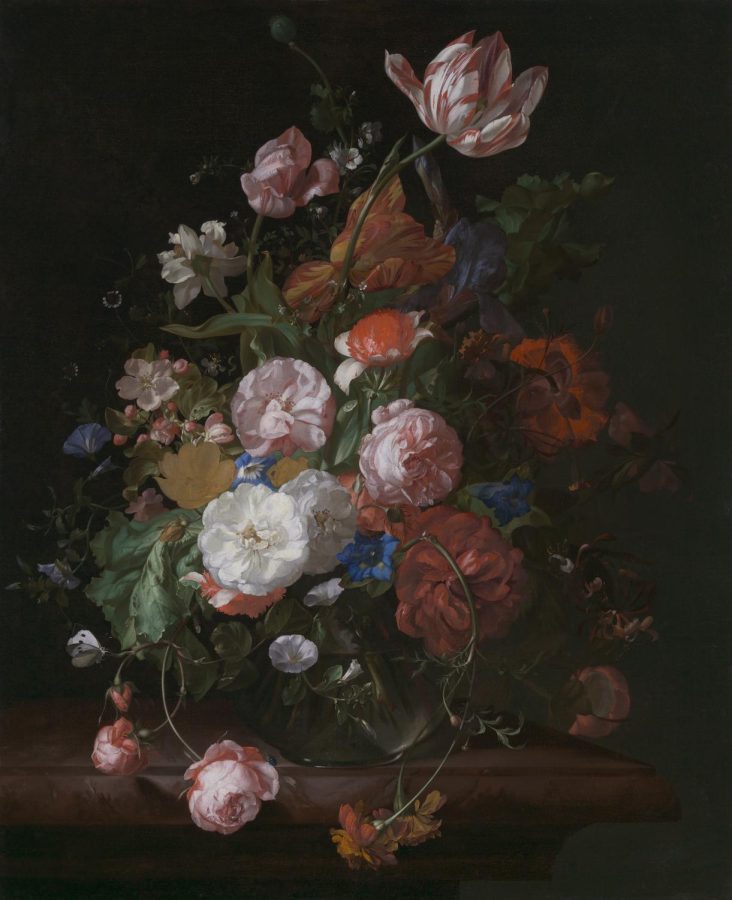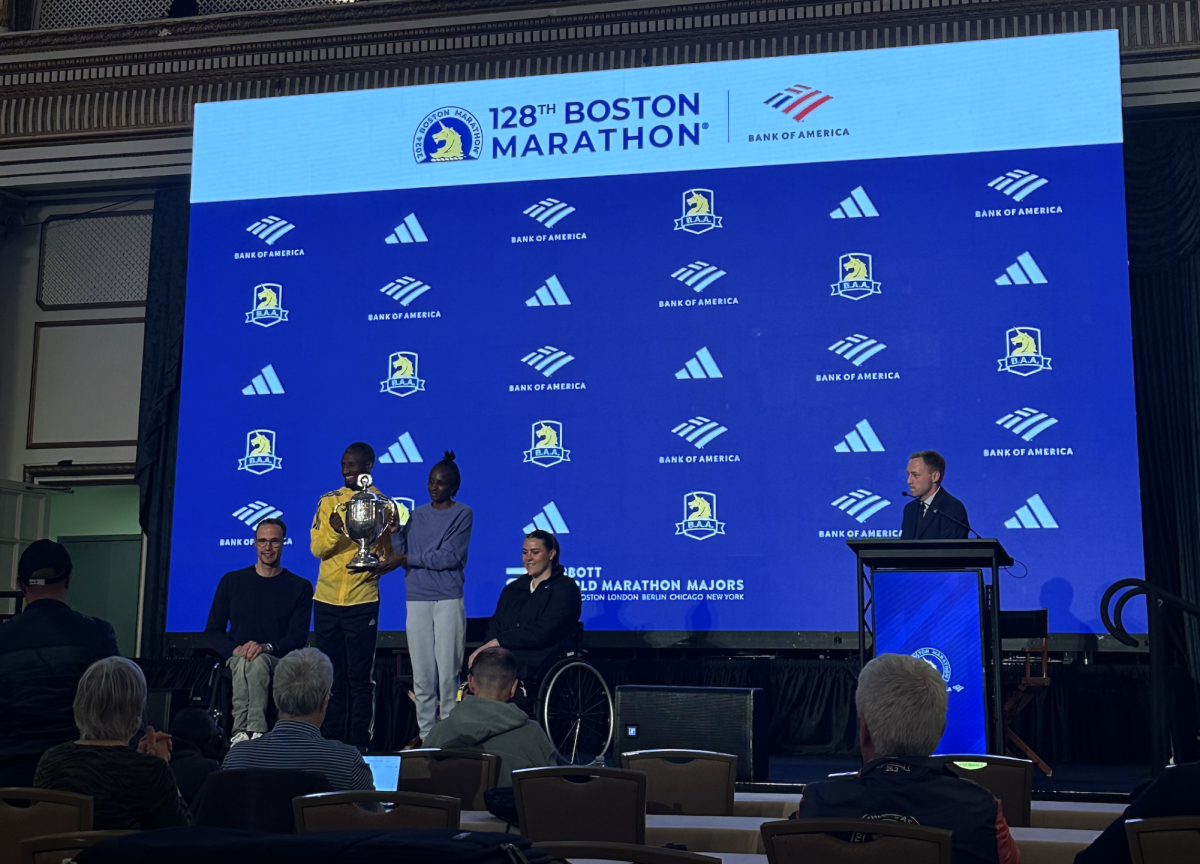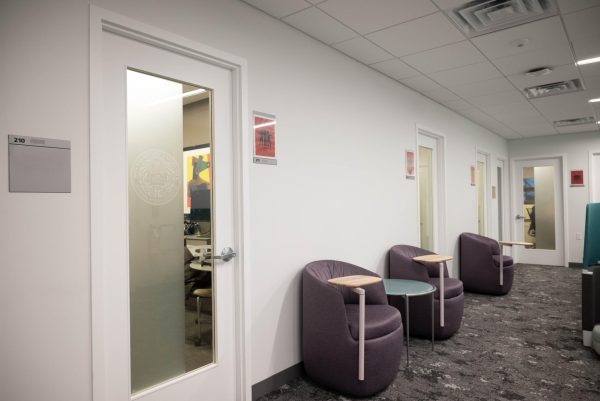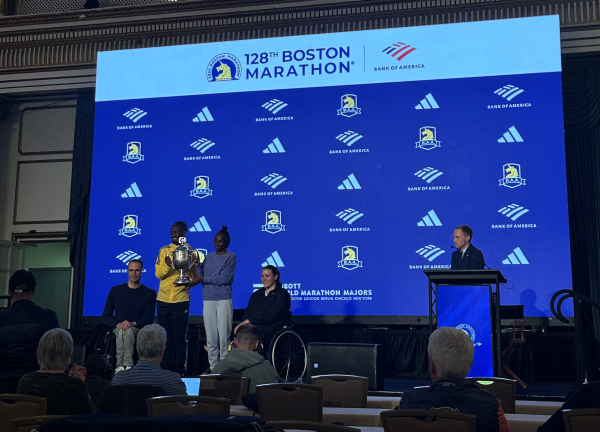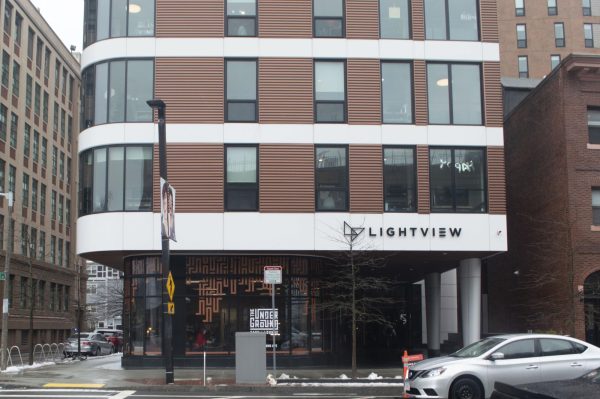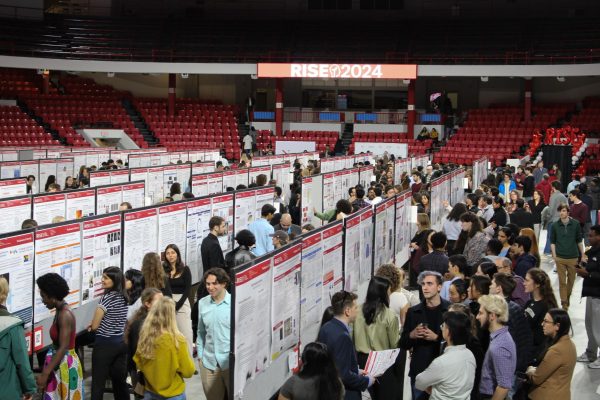MFA debuts Center for Netherlandish Art
“Still Life with Flowers,” (1709) by Rachel Ruysch is one of the paintings included in the CNA, or Center for Netherlandish Art. Photo courtesy of the Museum of Fine Arts.
October 22, 2021
Some days, the Museum of Fine Arts’ the Center for Netherlandish Art’ Van Otterloo-Weatherbie Director Christopher Atkins can be found admiring Rembrandt’s self-portrait “Artist in His Studio.” The focus is on the easel in the middle of the canvas as Rembrandt, holding a brush and palette, seemingly takes a step back to admire his own artwork.
Come Nov. 20, the painting will join the new galleries for Dutch and Flemish art at the Museum of Fine Arts, or MFA, which consists of a suite of seven renovated galleries. . Located on the second floor of the MFA, the opening of the new galleries celebrates the launch of the Center for Netherlandish Art, or CNA, an innovative center for scholarship housed at the MFA.
Larger-scale works by Rembrandt, Van Dyke and Reubens will grace the walls of the grand gallery. Take a right turn to another gallery, and you will be greeted by black and white tiled floors with vintage furniture alongside paintings packed on the walls. You will also see a tall dollhouse filled with miniaturized silver, decorations, chandeliers and wallpaper.
“What we hope people do is imagine walking into a late 17th-century Amsterdam canal house to try and give you an idea of the type of environment most of these works were created for,” Atkins said.
Outside, another gallery will showcase paintings of integrated decorative arts. Peter Saenredam’s architectural paintings will stand next to tulip paintings and other pieces, including a coconut husk mounted in silver, which has never been displayed before. The exhibition will also feature eight paintings by four female artists, including Dutch painter Maria Schalcken.
“It’s a gorgeous picture but also adds a whole other dimension to our understanding of a really rich, vibrant, artistic environment,” Atkins said.
Atkins said he engaged curators, scholars, economists and other experts to collaborate on opening the exhibition.
“There is a theme of technical virtuosity really showing off, in particular; texture,” Atkins said about the artworks that will be displayed.
To convey the complexities of the art market, Atkins worked with Northeastern professors Pedro Cruz and Kristian Kloeckl — along with Niyati Vijay Kothari, a second-year masters student in experience design and Shan Wei, a second-year masters student in information design and data visualization — to conceptualize two data visualizations that will live in one of the galleries. This single rotating gallery in the suite of new galleries for Dutch and Flemish art will be dedicated to presenting research developed at the CNA. The team of four used data stored at the The Netherlands Institute for Art History in the Hague to illustrate the competitiveness of the Dutch art market in the 17th century.
“So this gets to, indeed, our collaborative nature, our interdisciplinary work, trying to think about new ways of communicating information to our audience,” Atkins said.
With digital elements on display juxtaposing centuries-old paintings, innovation is at the heart of CNA.
The exhibition came to fruition through a gift of 114 paintings from the Van Otterloo and Weatherbie families in 2017. As part of their gift, both families wanted a research center to be realized, so the materials, previously in private hands, could be studied by scholars.
Tarun Khanna, a professor at Harvard Business School and a trustee of the museum, is involved in the advisory council for the CNA. He said he is looking forward to the CNA drawing in art lovers and broadening public interest in Dutch and Flemish art. Khanna is also interested in the intersection of art and technology.
“It just seemed like a good petri dish for innovation about the role of the museum itself,” Khanna said.
As a data enthusiast, Khanna hopes to collect data from the MFA to analyze ways the museum can improve to become a hub for change.
“There’s a lot of room for experimentation, which I think was the whole point,” Khanna said. “In addition to this being a center of excellence for Netherlandish art in this country and in this part of the world, why not also lean into the possibility of it being a center for innovation when it comes to museums at large?”
The CNA’s research center is slated to open and welcome students from all around the world on Nov. 20 in conjunction with the new galleries . The 5,000 square foot facility will include a library that houses 42,000 books — opening to the public in January 2022 — along with a seminar room, offices and a digitization lab. Atkins also said the goal of connecting scholars with one another is “manifested physically within this connection between the spaces.”
Starting spring 2022, there will be a graduate program taught at the CNA’s seminar room. Atkins said this unique opportunity will allow students to intimately interact with the artworks in the museum.
“It’s not just a slide lecture, but [we can] bring the works of art in so students … can interact in a way that expands the opportunity in the galleries,” Atkins said. “It’s something different to see a painting flat, to see it out of its frame, to be able to turn it around and think about the material that it was painted on.”
CNA Program Manager Marije Spek said she has been working closely with Atkins to launch a summer institute program and a fellowship program within the research center, which will launch in fall 2022. She said she is looking forward to seeing the first batch of scholars to enter the space.
“I think that will bring everything to life,” Spek said. “I just love seeing the enthusiasm of students and scholars. I think there’s just so much we can do in the new spaces.”
Approaching the educational programs with an interdisciplinary perspective, Spek said the dedicated focus on Netherlandish art will make the MFA a hub for Dutch and Flemish art in the United States.
“Research is really at the core of museum work because new research will unlock new stories and that will influence what we can do for the public and how we tell our stories,” Spek said. “I think research really fuels what we can do for public engagement.”
Jeffrey Muller, a member of the CNA advisory board and professor of history of art and architecture at Brown University, said the CNA’s research center programs and exhibition would not have come to life without a team effort.
“It’s vitalized by the act of cooperation and participation of MFA curators and professionals of different kinds, so that they really add another dimension to the significance and accessibility of the art,” Muller said. “They really are interested in different ways in opening it up and making it more inviting and attractive to a whole variety of audiences, whether that’s academic or museum visitors of all different kinds.”
Muller is working closely with Brown University graduate students to develop an exhibition for the CNA that will open in fall 2022. He said that the exhibition will concentrate on five paintings by prominent 17th century Flemish painter Michaelina Wautier. Each painting will depict one of the five senses: sight, sound, smell, touch and taste.
Atkins said he is excited for the public to see the exhibitions in a different light because most of the collection in the new galleries for Dutch and Flemish art will remain evergreen.
“We’re really excited to share this; I think this will be a major moment for us,” Atkins said. “This signals an ongoing commitment by the institution to view stories with this approach and in the center, putting scholarship into the public sphere.”
The Center for Netherlandish Art will open Nov. 20 in conjunction with the new galleries and the CNA library will open in January 2022.
This story was updated 8:50 p.m. Oct. 28 to reflect the difference between the CNA galleries and the New Galleries for Dutch and Flemish Art.


